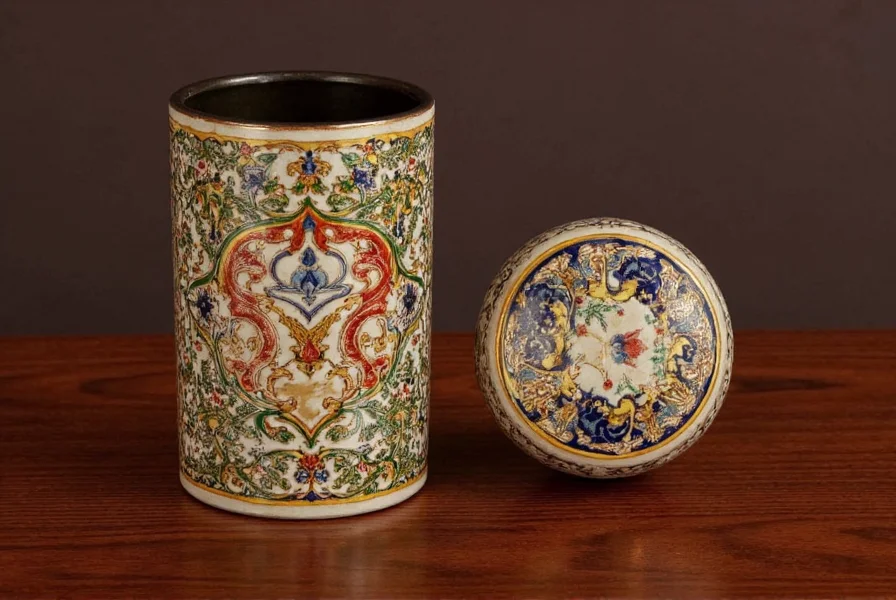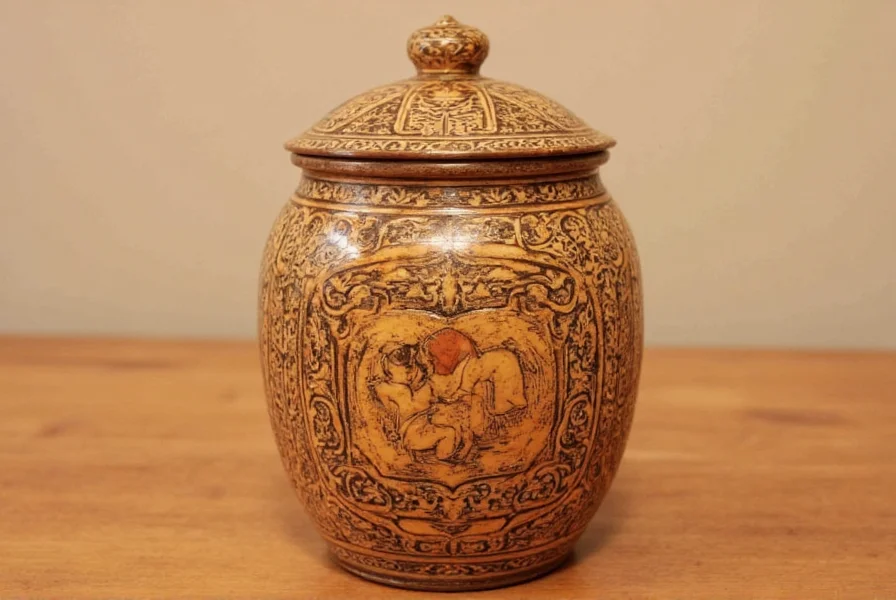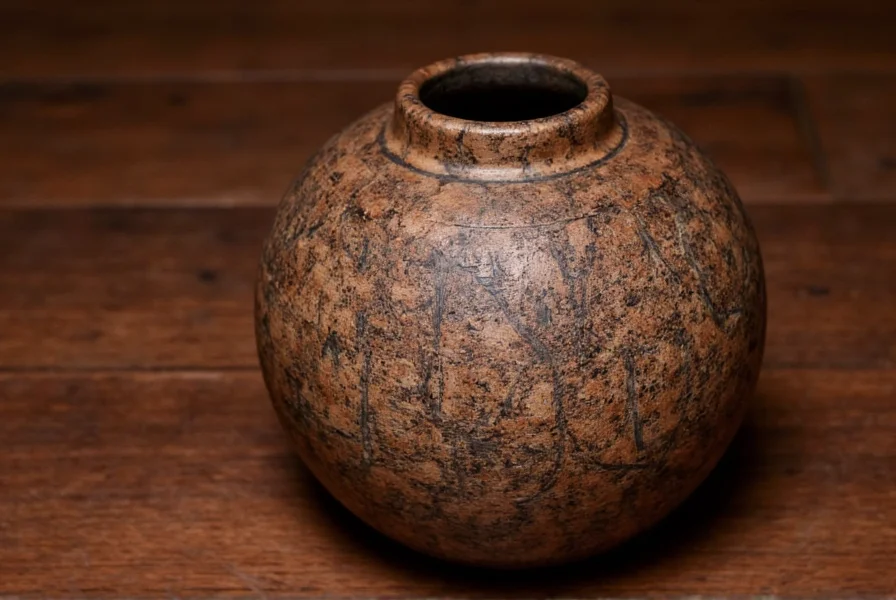Understanding the true nature of ginger jars dispels common misconceptions while revealing their rich cultural heritage. These distinctive vessels represent centuries of Chinese ceramic artistry and have maintained relevance through changing design trends. Their enduring appeal stems from both aesthetic qualities and historical significance.
Historical Origins and Misnomer
The term “ginger jar” represents a historical misunderstanding by European traders during the 17th and 18th centuries. When Chinese porcelain containers arrived in Western markets, merchants incorrectly assumed they were specifically designed for ginger storage. In reality, these versatile vessels served multiple purposes in Chinese households, storing everything from tea and rice to medicinal herbs.
Authentic ginger jars trace their origins to China's Ming Dynasty (1368-1644), with production peaking during the Qing Dynasty (1644-1912). Chinese artisans crafted these pieces using high-quality porcelain, featuring intricate hand-painted designs that reflected regional styles and cultural symbolism. The distinctive shape—with its narrow neck, rounded body, and domed lid—was designed for practical storage while showcasing artistic mastery.

Design Characteristics of Authentic Ginger Jars
True ginger jars share several distinctive physical attributes that distinguish them from ordinary vases or containers:
| Feature | Description | Historical Significance |
|---|---|---|
| Shape | Rounded body with high shoulder, narrow neck, domed lid | Optimized for storage and preservation of dry goods |
| Materials | Porcelain or stoneware, often with crackled glaze | Chinese porcelain technology represented advanced craftsmanship |
| Decoration | Hand-painted motifs: dragons, phoenixes, floral patterns | Symbols conveyed prosperity, longevity, and good fortune |
| Construction | Often made in two pieces (body and lid) | Practical design for frequent opening and closing |
Traditional vs. Contemporary Uses
Originally designed as functional storage containers in Chinese households, ginger jars served practical purposes across various settings. Wealthy families used them to store precious commodities like tea and silk, while ordinary households employed them for more common dry goods. The airtight seal provided by the distinctive lid design helped preserve contents in China's humid climate.
Today's decorative ginger jars maintain the traditional form while serving primarily aesthetic purposes. Interior designers frequently incorporate them as statement pieces that add cultural depth and visual interest to spaces. Their versatility allows them to complement various design styles:
- Traditional interiors: Paired with antique furniture and classic patterns
- Transitional spaces: Bridging traditional and contemporary elements
- Modern settings: Providing organic contrast to clean lines and minimalism
- Eclectic arrangements: Mixing with global artifacts for layered looks
Cultural Significance and Symbolism
Ginger jars carry profound cultural meaning within Chinese artistic tradition. The decorative motifs painted on authentic pieces communicate specific wishes and values:
Dragon patterns symbolize power and good fortune, frequently appearing on jars intended for imperial use. Phoenix designs represent harmony and prosperity, often featured on pieces created for wedding celebrations. Floral arrangements, particularly peonies and chrysanthemums, convey wishes for longevity and happiness.
The blue-and-white color scheme that characterizes many traditional ginger jars emerged during the Yuan Dynasty and became particularly popular during the Ming period. This distinctive palette resulted from cobalt oxide pigments that could withstand high firing temperatures, creating the enduring contrast that remains popular in contemporary reproductions.

Selecting and Incorporating Ginger Jars in Modern Decor
When choosing ginger jars for contemporary spaces, consider these practical guidelines to ensure authentic integration:
For those seeking authentic antique pieces, examine construction details like hand-painted imperfections and natural wear patterns. Reproduction ginger jars offer more affordable options while maintaining traditional aesthetics. The size should relate proportionally to your space—larger jars make bold statements in entryways, while smaller versions work well on shelves or mantels.
Successful placement follows basic design principles: odd numbers create more dynamic arrangements, varying heights add visual interest, and strategic grouping prevents a cluttered appearance. Many interior designers recommend using ginger jars as focal points rather than background elements, allowing their distinctive shapes to command attention.
Care and Preservation Techniques
Proper maintenance ensures your ginger jars remain beautiful for generations. For antique or valuable pieces, avoid commercial cleaners that might damage delicate glazes. Instead, use a soft cloth with minimal water for dusting, and never immerse ceramic pieces completely unless you're certain of their structural integrity.
Display considerations significantly impact longevity. Direct sunlight can fade hand-painted designs over time, while dramatic temperature changes may cause glaze cracking. Place ginger jars away from heating vents and exterior doors to maintain stable conditions. For particularly valuable pieces, consider UV-protective glass cases that preserve visibility while minimizing environmental damage.
Common Questions About Ginger Jars
Why are they called ginger jars if they weren't used for ginger?
Western merchants in the 17th-18th centuries misidentified these Chinese storage containers when they transported various spices, including ginger. The name stuck despite their actual multi-purpose use in Chinese households for storing tea, rice, and other dry goods.
How can I tell if a ginger jar is authentic or a reproduction?
Authentic antique ginger jars typically show hand-painted imperfections, natural wear patterns, and may have maker's marks on the base. The weight feels substantial, and the glaze often has subtle variations. Reproductions frequently feature perfectly uniform painting, lighter weight, and modern manufacturing marks. Consulting with an Asian antiques specialist provides the most reliable authentication.
What's the proper way to use ginger jars in home decor?
Ginger jars work best as standalone statement pieces rather than filler objects. Interior designers recommend grouping odd numbers (3 or 5) of varying heights on shelves or mantels. Larger jars make dramatic entryway accents, while smaller versions suit bookshelves. Avoid overcrowding—these pieces deserve space to showcase their distinctive shapes and craftsmanship.
Do ginger jars have cultural significance beyond decoration?
Yes, traditional Chinese ginger jars carried symbolic meaning through their decorative motifs. Dragon patterns represented imperial power and good fortune, phoenix designs symbolized harmony, and floral arrangements conveyed wishes for longevity. The blue-and-white color scheme that became popular during the Ming Dynasty reflected both technical innovation in porcelain production and aesthetic preferences of the time.
How should I care for antique ginger jars?
Handle antique ginger jars with clean, dry hands to prevent oil transfer. Dust gently with a soft microfiber cloth rather than commercial cleaners. Avoid direct sunlight to prevent fading of hand-painted designs. Maintain stable temperature and humidity levels, as dramatic changes can cause glaze cracking. For valuable pieces, consider UV-protective display cases that allow visibility while minimizing environmental damage.











 浙公网安备
33010002000092号
浙公网安备
33010002000092号 浙B2-20120091-4
浙B2-20120091-4